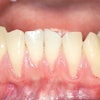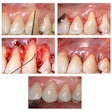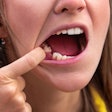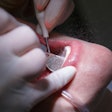
Dental researchers are likely to share in the $1.1 billion the U.S. government is spending on comparative effectiveness research (CER), if the findings of a new report from the Institute of Medicine (IOM) are taken to heart.
The report, released in June by the IOM's newly formed Committee on Comparative Effectiveness Research Prioritization (CCERP), recommends 100 priorities for CER, including two specific to oral health: comparing the effectiveness of various delivery models in preventing dental caries in children, and comparing surgical care to a medical model of prevention and care in managing periodontal disease.
"We in the American Dental Association welcome any insights into the effectiveness of what we do -- whether in terms of a systemic approach or a therapeutic agent or technique," said Albert Guay, D.M.D., chief policy advisor for the ADA. "Healthcare is a multidimensional field, and the IOM report is looking at several dimensions of it, and we welcome that -- as long as the resulting research is transparent and well-conducted."
“We need this type of research. No one is funding it today.”
— Mark Wolff, D.D.S., Ph.D., New York
University College of Dentistry
The report has its origins in the American Recovery and Reinvestment Act of 2009. That legislation, signed into law February 17 by President Barack Obama, allocated $400 million to the Office of the Secretary in the Department of Health and Human Services (HHS), $400 million to the National Institutes of Health (NIH), and $300 million to the Agency for Healthcare Research and Quality (AHRQ) for comparative effectiveness research.
The law also called for the creation of the Federal Coordinating Council for Comparative Effectiveness Research (FCCCER) and the IOM committee to recommend priorities for the funding allocated to the Office of the Secretary of the HHS. Following its creation, the CCERP solicited input from the public, healthcare professionals, and medical organizations. Committee members had three rounds of voting to whittle the original list of thousands of topics down to a top 100.
The resulting priorities include comparison of the most effective treatment strategies and ways to reduce health disparities among different populations for major diseases, such as cancer, cardiovascular disease, diabetes, and musculoskeletal disorders. They also address major systemic problems in healthcare delivery and more specific issues in the diagnosis and treatment of dental caries, periodontal disease, and osteoarthritis.
The committee members suggest in their report that the NIH and AHRQ could use the priority list as a framework to determine their priorities for comparative effectiveness research funding and to determine future decades of CER. To this end, the report authors provide 10 recommendations for a robust, sustainable CER infrastructure.
Dental priorities
The main oral health research topic included in the highest-priority topics was to "compare the effectiveness of the various delivery methods (e.g., primary care, dental offices, schools, mobile vans) in preventing dental caries in children."
"In pediatric dentistry, people are very eager to have this seen as a priority and support it. It's definitely long overdue to derive hard data on this," said Amr Moursi, D.D.S., Ph.D., a professor and the chair of the department of pediatric dentistry at the New York University College of Dentistry. "There's currently a patchwork of wonderful programs around the country, but we need something solid and coordinated, rather than each various center using a particular approach just because they were able to obtain funding for that approach."
Burton Edelstein, D.D.S., M.P.H., a professor of clinical dentistry and clinical health policy and management at the Columbia University College of Dental Medicine and the founding chair of the Children's Dental Health Project, told DrBicuspid.com that the selection of this topic is "gratifying because it focuses on prevention rather than repair." However, he also said it is "curious" that the priority focuses on the delivery of preventive care rather than on uncovering the best way to prevent disease.
"My personal observation is that we first need to better understand what really works in caries risk assessment, develop disease management protocols that are tailored to risk, and adapt these protocols to individual families' unique capacities and opportunities," Dr. Edelstein said.
The report's other top 100 oral health priority is to "compare the clinical and cost-effectiveness of surgical care and a medical model of prevention and care in managing periodontal disease to increase tooth longevity and reduce systemic secondary effects in other organ systems."
Mark Wolff, D.D.S., Ph.D., the associate dean for predoctoral clinical education in the department of cariology and comprehensive care at the New York University College of Dentistry, said, "I absolutely think that this cuts to the heart of one of the most serious problems in dentistry, and we need this type of research. No one is funding it today."
However, at least one group is concerned that the IOM's priority list may not get translated into funded research. A report from the FCCCER, also issued in June, sketches out a framework for arriving at priorities for research, investment of human and scientific capital, assembly of data and infrastructure, and dissemination and translation of comparative effectiveness research; however, it does not define specific CER priorities and barely mentions oral health, said Scott Tomar, D.M.D., president of the American Association of Public Health Dentistry and a professor in the department of community dentistry and behavioral science at the University of Florida College of Dentistry.
"I'm not sure if they deliberately excluded oral health, but it's not on their radar screen," Dr. Tomar told DrBicuspid.com.
Dr. Tomar has written letters to HHS Secretary Kathleen Sebelius and AHRQ Director Carolyn Clancy, M.D., urging them to adopt and provide resources for the priority oral health topics identified by the IOM report on CER priorities within the research component of their CER portfolio.
Copyright © 2009 DrBicuspid.com



















